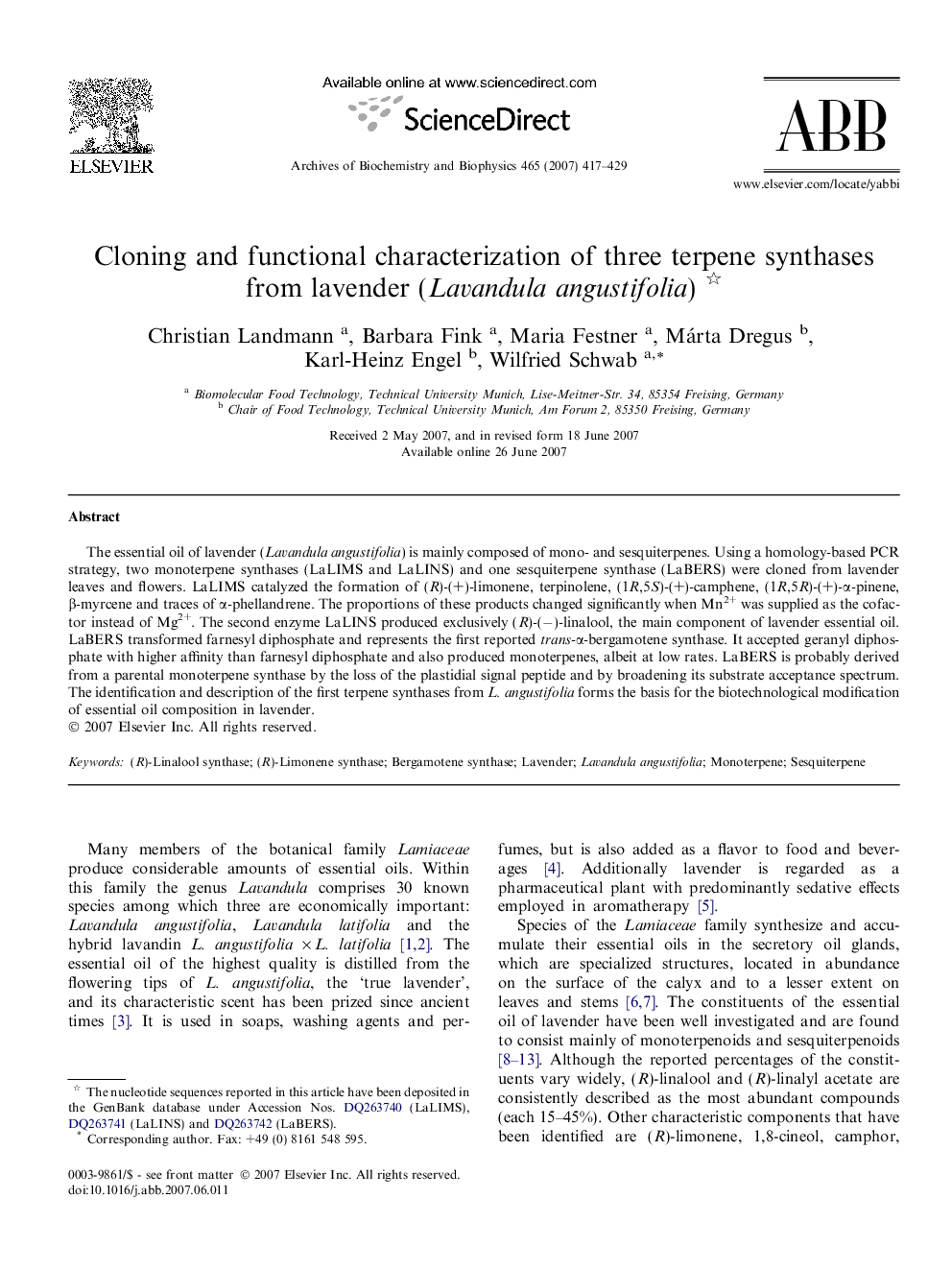| Article ID | Journal | Published Year | Pages | File Type |
|---|---|---|---|---|
| 1927083 | Archives of Biochemistry and Biophysics | 2007 | 13 Pages |
The essential oil of lavender (Lavandula angustifolia) is mainly composed of mono- and sesquiterpenes. Using a homology-based PCR strategy, two monoterpene synthases (LaLIMS and LaLINS) and one sesquiterpene synthase (LaBERS) were cloned from lavender leaves and flowers. LaLIMS catalyzed the formation of (R)-(+)-limonene, terpinolene, (1R,5S)-(+)-camphene, (1R,5R)-(+)-α-pinene, β-myrcene and traces of α-phellandrene. The proportions of these products changed significantly when Mn2+ was supplied as the cofactor instead of Mg2+. The second enzyme LaLINS produced exclusively (R)-(−)-linalool, the main component of lavender essential oil. LaBERS transformed farnesyl diphosphate and represents the first reported trans-α-bergamotene synthase. It accepted geranyl diphosphate with higher affinity than farnesyl diphosphate and also produced monoterpenes, albeit at low rates. LaBERS is probably derived from a parental monoterpene synthase by the loss of the plastidial signal peptide and by broadening its substrate acceptance spectrum. The identification and description of the first terpene synthases from L. angustifolia forms the basis for the biotechnological modification of essential oil composition in lavender.
